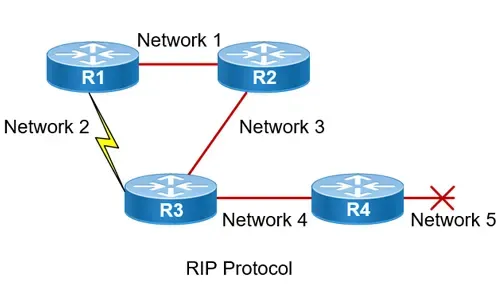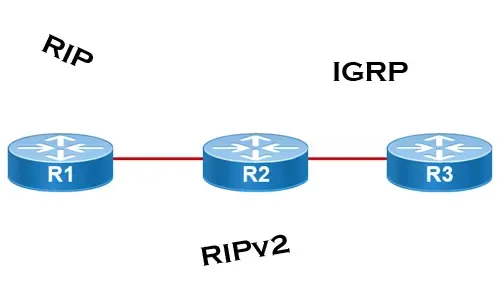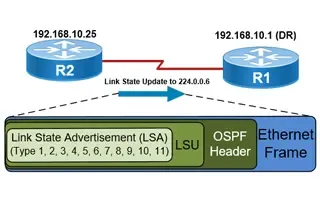Link State Routing Protocols
Link State routing protocols do not view networks in terms of adjacent routers and hop counts, but they build a comprehensive view of the overall network which fully describes the all possible routes along with their costs. Using the SPF (Shortest Path First) algorithm, the router creates a "topological database" which is a hierarchy reflecting the network routers it knows about. It then puts it's self on the top of this hierarchy, and has a complete picture from it's own perspective.
Link State protocols, unlike Distance Vector broadcasts, use multicast.
Multicast is a "broadcast" to a group of hosts, in this case routers (Please see the multicast page for more information). So if we had 10 router of which 4 where part of a "mutilcast group" then, when we send out a multicast packet to this group, only these 4 routers will receive the updates, while the rest of them will simply ignore the data. The multicast address is usually 224.0.0.5 & 224.0.0.6, this address is defined by the Interior Gateway Routing Protocol (IGRP).
When a router using a Link State protocol, such a Open Shortest Path First (OSPF) knows about a change on the network, it will multicast this change instantly, there for flooding the network with this information. The information routers require to build their databases is provided in the form of Link State Advertisement Packets (LSAP). Routers do not advertise their entire routing tables, instead each router advertises only its information regarding immediately adjacent routers.
Link State protocols in comparison to Distance Vector protocols have:
- Big memory requirements
- Shortest path computations require many CPU circles
- If network is stable little bandwidth is used; react quickly to topology changes
- Announcements cannot be “filtered”. All items in the database must be sent to neighbors
- All neighbors must be trusted
- Authentication mechanisms can be used to avoid undesired adjacencies
- No split horizon techniques are possible
Even though Link State protocols work more efficiently, problem can arise. Usually problems occur cause of changes in the network topology (links go up-down), and all routers don't get updated immediately cause they might be on different line speeds, there for, routers connected via a fast link will receive these changes faster than the others on a slower link.
Different techniques have been developed to deal with these problem and these are :
1) Dampen update frequency
2) Target link-state updates to multicast
3) Use link-state area hierarchy for topology
4) Exchange route summaries at area borders
5) Use Time-stamps Update numbering & counters
6) Manage partitions using a area hierarchy
This completes out discussion around Link State Routing Protocols.
Your IP address:
3.129.209.186
Wi-Fi Key Generator
Follow Firewall.cx
Cisco Password Crack
Decrypt Cisco Type-7 Passwords on the fly!


















